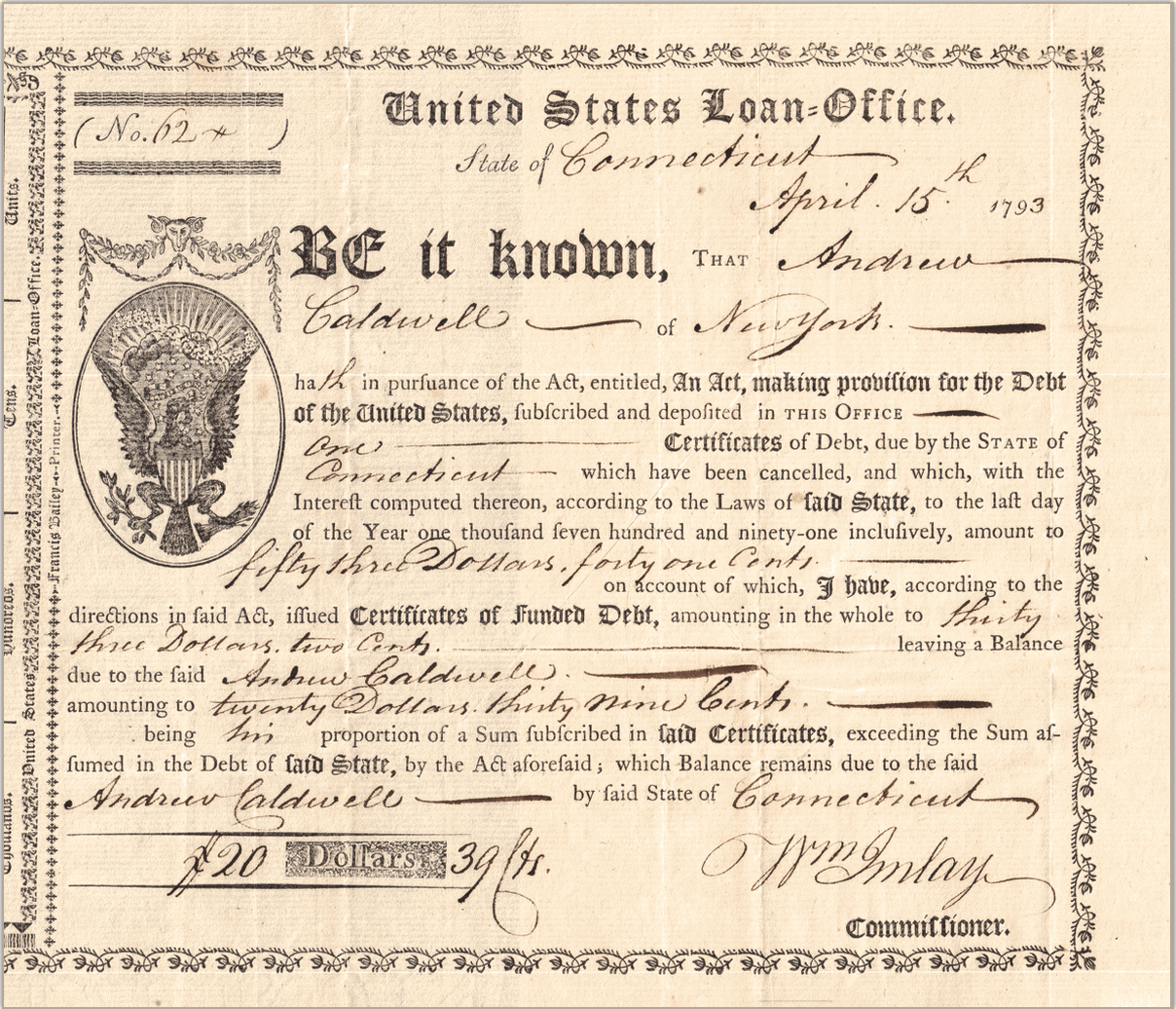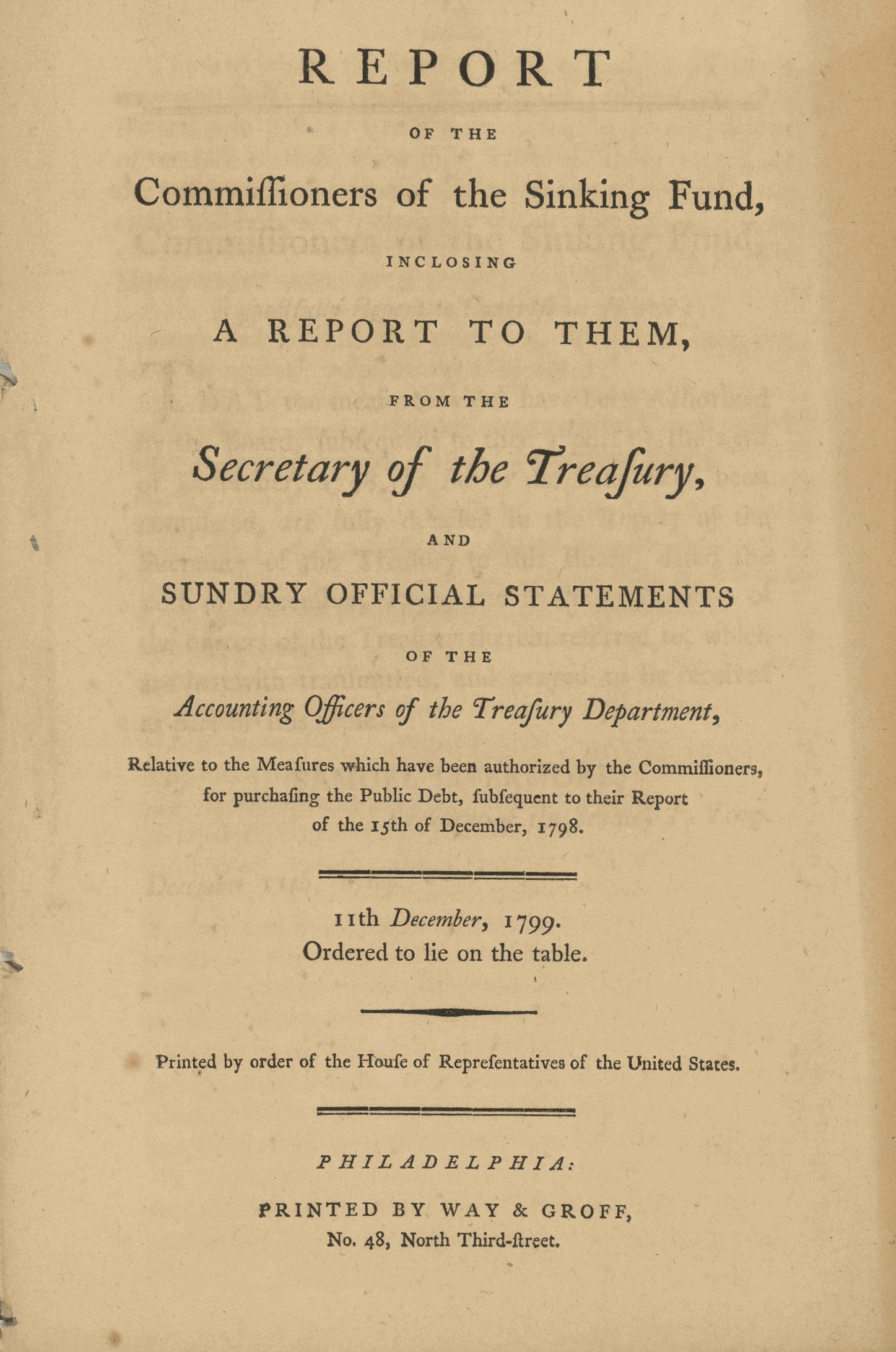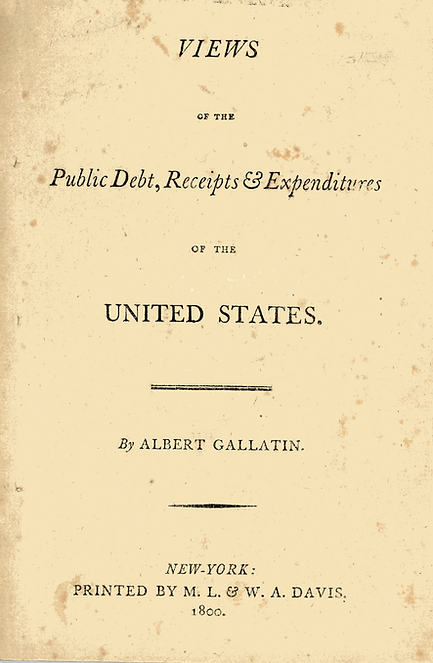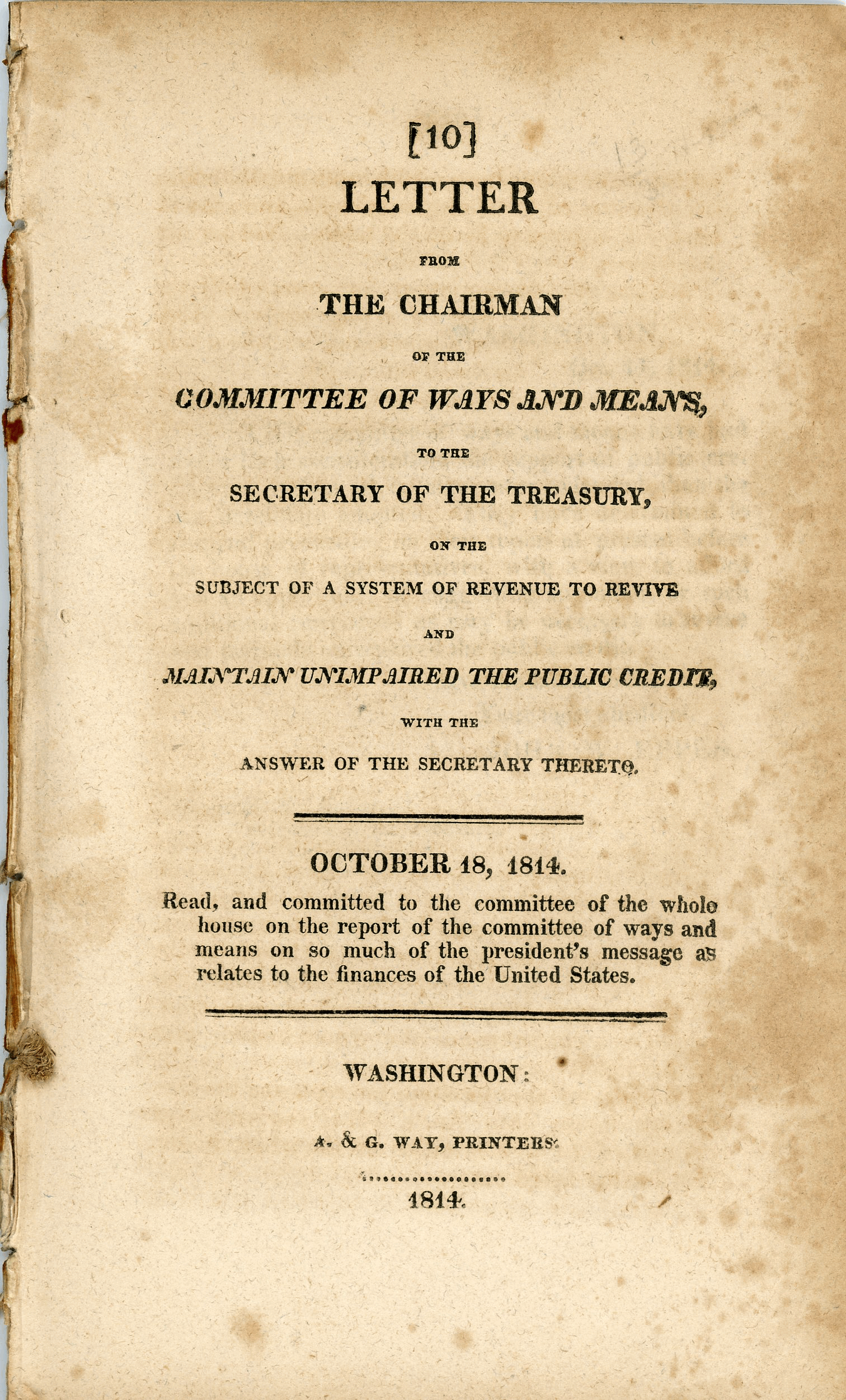The end of the 18th Century saw the United States take its first steps as an independent nation. To fund the eight-year conflict with the British Empire, the newly formed Continental Congress would need to establish its own financial instruments and institutions. Over the course of the Revolution, it would issue some $241 million in currency, with the individual states printing an additional $209 million themselves. Issuing paper currency was not enough by itself. By the signing of the Treaty of Paris in 1783, the United States had borrowed some $43 million in various domestic and international loans to help finance the Revolution. The Herbstman Collection has several loan instruments from this period, including a very rare bill of exchange from Revolutionary War financier Haym Salomon and a Treasury Circular signed by Alexander Hamilton. The collection also features several original printings of some of the reports used in shaping federal policy on the public credit.

1781 3,000 Livres Bill of Exchange Between Jean Holker and Haym Solomon
Dated September 7, 1781
This bill of exchange was similar to a check; it was a non-interest bearing note representing funds to be remitted at a future specified date. Bills of exchange were brokered by Haym Salomon to help fund the personal finances of James Madison and several members of Congress. Salomon also brokered loans from the Spanish and Dutch governments that helped to fund the war. He was instrumental in helping Robert Morris obtain the money necessary for General Washington to wage the Battle of Yorktown, effectively ending the war. This bill of exchange was drafted by Jean Holker, a former French consul general who resigned his office (1781) to continue his private business ventures with the Revolutionists. He was a business associate of Robert Morris, and this bill was drafted during the very period Washington needed funds to defeat Cornwallis.
One of a half dozen known Haym Salomon signed documents in private collections


1789 Treasury Department Circular
Concerning the Discount of Import Duties Secured by Bonds
Signed by Alexander Hamilton
Dated October 6, 1789
Alexander Hamilton was appointed as America's first Secretary of the Treasury on September 11, 1789. One of the first issues he had to contend with was the set of acts recently passed by Congress enacting import duties along with establishing the U.S. Customs Service. Indeed, import tariffs and duties were the primary source of federal revenue prior to the imposition on income taxes. The Treasury Comptroller was initially responsible for the fiscal administration of the various customs laws. Customs Collectors, to whom this Circular was directed towards, were present at each of America's ports of entry, and were responsible for the collection of the duties on various imported goods. These customs duties were often secured by bonds. The text reads:
"I have reason to know, that some of the Collectors have conceived themselves authorised to make ye discount allowed by Law for prompt payment, after Bonds were given for securing the Duties. This is not in my opinion, the true construction of the Act. You will therefore under such circumstances avoid making the above discount."
Rare Copy

1782 Twelve Dollar Bill of Exchange
Dated January 22, 1782
This bill of exchange was issued by the Continental Loan Office of Massachusetts. It was issued as a set of four certificates, (only one of which was payable), as a measure to mitigate against accidental loss or destruction. This bill was redeemable in Paris, and was signed by Michael Hillegas, who served as the first Treasurer of the United States (1775-1789).
Between 75 - 200 examples of this denomination are estimated to exist


1792 Six Percent Loan, Stocks of 1790
Notary Copy
Dated June 16, 1792
This loan in the amount of $6,666.64 was made under the provisions of an August 4, 1790 Act of Congress. It was enacted to help refinance earlier government debt, and was referred to as a 6% stock- a term which, at the time, was interchangeable with the word loan. This document bears the signature of the first Register of the Treasury Joseph Nourse, who served in this position under the first six presidential administrations. The notary signature on this piece is that of Clement Biddle, a notary, broker, and the first U.S. Marshal for the state of Pennsylvania.

1793 United States Loan Office
State of Connecticut Certificate of Debt
Dated April 15, 1793
This Certificate of Debt was issued by Connecticuts's federal loan commissioner. In the aftermath of the war, Connecticut assumed some state debt above the $1.6 million assigned to by the Congress. These obligations were signed by William Imlay, and were eventually redeemed with U.S. Government bonds.
Between 30 - 75 examples of this certificate are estimated to exist
1794 Act of the Third Congress: First Session
An Act Limiting the Time for Presenting Claims for
Destroyed Certificates of Certain Descriptions
Approved April 25, 1794
This Act of the Third Congress provided a framework for claims relating to the Loan Office Certificates issued as part of the nation's Revolutionary War debt. Holders of these loan certificates may have had accidental destruction of their securities, and this law provided for the time frame and evidentiary manner by which a bond owner could submit a claim for redemption by the Treasury Department.
This broadside was printed in Philadelphia by Francis Childs and John Swaine, the official printers to the United States. Broadsides of this Act (bearing the signature of the Secretary of State) would have been distributed to all thirteen States.

Click to view document
1796 Report of the Commissioners of the Sinking Fund
Dated December 16, 1796
In 1789, Alexander Hamilton established a Sinking Fund within the Treasury Department as means to lower the Revolutionary War Debt, which stood over $75 million. The Sinking Fund would eventually include revenues from the sale of public lands, duties on imports, surplus revenues, dividends on the capital stock of the Bank of the United States, and Congressional appropriations. As many of these revenue sources were unpredictable, the commissioners of the fund were unable to provide an accurate guidance as to future revenues, or when the national debt would be paid in full. Despite its inconsistencies, the fund was able to play a role in retiring the national debt in 1835. This example is a routine report from the fund's commissioners to Congress. It is signed in type by John Adams on behalf on the Commission. This copy belonged to the Representative from Pennsylvania's 4th District, Samuel Sitgreaves (in office 1775-1778), and bears his signature.
Rare copy, 1796, Printed by order of the House of Representatives, F. Childs, Philadelphia, 6 pages
Click to view document
1799 Report of the Commissioners of the Sinking Fund
Dated December 11, 1799
The annual report of the Commissioners of the Sinking Fund, accompanied by accounting documents from the Treasury.
Rare copy, 1799, Printed by order of the House of Representatives, Way & Groff, Philadelphia, 12 pages
Click to view document
Views of the Public Debt, Receipts & Expenditures of the United States
by Albert Gallatin
First Edition, 1800
Authored in 1800 by Albert Gallatin, this famous report was highly critical of the nation's financial condition. Gallatin was the longest serving Treasury Secretary in American history (1801-1814), serving both Presidents Jefferson and Madison. He was responsible for the law requiring the Secretary's annual report to Congress. Prior to his appointment, Gallatin served in the House of Representatives, where he established the powerful Ways & Means Committee. A second edition of this report was printed in 1801 after Gallatin took office.
Rare First Edition, 1800, Printed by M. L. & W. A. Davis, New York

1804 Report of the Commissioners of the Sinking Fund
Dated February 6, 1804
Rare copy, 1804, Printed by order of the House of Representatives
Click to view document
1814 Letter from the Chairman of Ways And Means, to the Secretary of the Treasury on the Subject of a System of Revenue to Revive and Maintain Unimpaired the Public Credit with the Answer of the Secretary Thereto
Dated October 18, 1814
This document is contains a letter from the Chairman of the House Ways & Means Committee to the Treasury Secretary, along the Secretary's reply via a detailed proposal. At the time, Virginia Congressman John W. Eppes chaired Ways & Means, twice serving in this position (Eleventh and Thirteenth Congresses). During this period, the nation's finances were strained due to the costs of the War of 1812. Public and political concerns included the short supply of hard money and the stability of various private bank currencies. There were additional concerns relating to government revenue and the stability of the public credit. In response to these problems, Alexander J. Dallas, the nation's sixth Secretary of the Treasury, presents Congress a detailed proposal to remedy the nation's financial difficulties.
Rare copy, 1814, Printed by A. & G. Way Printers, Washington, 22 pages
Copyright The Joe I. Herbstman Memorial Collection of American Finance
All Rights Reserved





